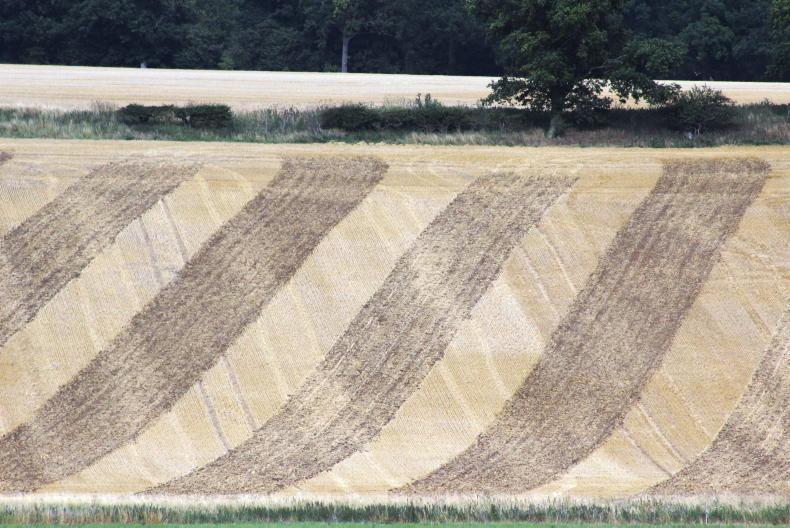When it comes to grass weed control in tillage crops we must use every tool in the box to get these weeds, many of which are invasive, under control. Herbicides are the last resort and in some cases are almost ineffective in controlling these weeds.
Cultural control methods are essential to reduce chemical use, protect the chemistry that is working, and reduce spend on herbicides.
When it comes to a weed like blackgrass in a cereal crop your only option when it comes to herbicides is to use glyphosate to control it which means losing some of the crop.
Here are some of the options when it comes to grass weed control. A crucial part of grass weed control is knowing when the seeds germinate. Delaying sowing can help in some cases.
Crop rotation
Rotating crops can reduce pressure, but also provide different herbicide options. If you are applying a graminicide to oilseed rape or beans for example it means different chemistry is being used and so may be more effective, but also this will help to reduce the risk of resistance build up to the herbicides that work well currently.
Delayed sowing

Examine the grass weed germination calendar in Figure 1 on page 15 and you can decide if altering your sowing date can help to reduce grass weed populations. For example, delaying sowing of winter cereals and cultivating weeds that may have germinated can reduce grass weed risk.
Stale seedbeds

Allowing weeds to germinate after a crop is harvested can allow these weeds to be sprayed off with glyphosate. In some cases weeds do not need to be cultivated. Barren and great brome will germinate well if the ground is cultivated. However, meadow, rye and soft brome want light and so should be left on the soil surface to germinate.
Rogueing

If you have grass weeds in your crops you need to destroy them before they go to seed. This means either spraying off patches with glyphosate or pulling those weeds.
Cultivations

/ Donal O' Leary
Cultivation can impact significantly on grass weed populations. For example, ploughing can reduce black grass populations by almost 70%.
Hygiene

\ CJ Nash
Clean machinery between farms and between fields, particularly those you know are infested with a grass weed. This should stop the spread of seeds. Ensure you clean boots from field to field as well or wear boot covers.
When it comes to grass weed control in tillage crops we must use every tool in the box to get these weeds, many of which are invasive, under control. Herbicides are the last resort and in some cases are almost ineffective in controlling these weeds.
Cultural control methods are essential to reduce chemical use, protect the chemistry that is working, and reduce spend on herbicides.
When it comes to a weed like blackgrass in a cereal crop your only option when it comes to herbicides is to use glyphosate to control it which means losing some of the crop.
Here are some of the options when it comes to grass weed control. A crucial part of grass weed control is knowing when the seeds germinate. Delaying sowing can help in some cases.
Crop rotation
Rotating crops can reduce pressure, but also provide different herbicide options. If you are applying a graminicide to oilseed rape or beans for example it means different chemistry is being used and so may be more effective, but also this will help to reduce the risk of resistance build up to the herbicides that work well currently.
Delayed sowing

Examine the grass weed germination calendar in Figure 1 on page 15 and you can decide if altering your sowing date can help to reduce grass weed populations. For example, delaying sowing of winter cereals and cultivating weeds that may have germinated can reduce grass weed risk.
Stale seedbeds

Allowing weeds to germinate after a crop is harvested can allow these weeds to be sprayed off with glyphosate. In some cases weeds do not need to be cultivated. Barren and great brome will germinate well if the ground is cultivated. However, meadow, rye and soft brome want light and so should be left on the soil surface to germinate.
Rogueing

If you have grass weeds in your crops you need to destroy them before they go to seed. This means either spraying off patches with glyphosate or pulling those weeds.
Cultivations

/ Donal O' Leary
Cultivation can impact significantly on grass weed populations. For example, ploughing can reduce black grass populations by almost 70%.
Hygiene

\ CJ Nash
Clean machinery between farms and between fields, particularly those you know are infested with a grass weed. This should stop the spread of seeds. Ensure you clean boots from field to field as well or wear boot covers.











 This is a subscriber-only article
This is a subscriber-only article










SHARING OPTIONS: